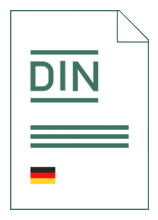
Standard [WITHDRAWN]
DIN EN 13237:2013-01
Potentially explosive atmospheres - Terms and definitions for equipment and protective systems intended for use in potentially explosive atmospheres; German version EN 13237:2012
- German title
- Explosionsgefährdete Bereiche - Begriffe für Geräte und Schutzsysteme zur Verwendung in explosionsgefährdeten Bereichen; Deutsche Fassung EN 13237:2012
- Publication date
- 2013-01
- Original language
- German
- Pages
- 28
- Publication date
- 2013-01
- Original language
- German
- Pages
- 28
- DOI
- https://dx.doi.org/10.31030/1892636
Product information on this site:
Quick delivery via download or delivery service
All transactions are encrypted
Overview
DIN EN 13237 has been produced to assist designers, manufacturers and other interested parties to use harmonised terms and definitions (vocabulary) for equipment and protective systems intended for use in potentially explosive atmospheres. It specifies the vocabulary to be used to give all standards in this area an overall uniformity of terminology. This standard only deals with terms which are related to explosion hazards in connection with an explosive atmosphere. DIN EN 13237 has been prepared by Technical Committee CEN/TC 305 "Potentially explosive atmospheres - Explosion prevention and protection", the secretariat of which is held by DIN (Germany). The responsible German working committee is NA 095-02-06 AA "Terminologie, Methodik" ("Terminology and methodology") at NASG.
Content
ICS
DOI
This document replaces DIN EN 13237:2003-11 .
This document has been replaced by: DIN EN 13237:2025-01 .

